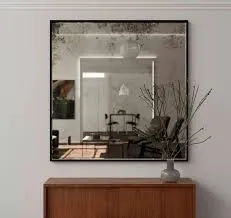

The Benefits and Applications of Single Low-E Glass
In the contemporary architectural landscape, energy efficiency and sustainability have become key considerations for both builders and homeowners. One innovative solution that has emerged to meet these demands is single low-E (low emissivity) glass. This specialized glass not only contributes to enhanced energy performance but also offers a host of other advantages that make it a popular choice in modern construction.
The Benefits and Applications of Single Low-E Glass
One significant benefit of using single low-E glass is its contribution to a comfortable indoor environment. By minimizing temperature fluctuations and reducing drafts, this type of glass creates a more stable thermal environment. Homeowners will notice fewer hot and cold spots throughout their living spaces, enhancing overall comfort. Moreover, the reduction in glare due to the controlled transmission of natural light allows for a more pleasant atmosphere inside, making living and working spaces more enjoyable.

In addition to comfort and energy efficiency, single low-E glass contributes to the longevity of furnishings and interiors. Standard glass allows a high percentage of ultraviolet (UV) radiation to penetrate, which can lead to fading and damage to textiles, artwork, and wooden furniture over time. Low-E glass, by contrast, blocks a significant amount of UV rays, helping to preserve the integrity and aesthetics of interior items. This feature not only protects investments but also aids in minimizing the environmental impact associated with replacing damaged furnishings.
The versatility of single low-E glass is another reason for its growing popularity. It can be utilized in various applications, ranging from residential homes to commercial buildings and even in innovative structures like skylights and curtain walls. Its ability to contribute to LEED (Leadership in Energy and Environmental Design) certification makes it particularly appealing to builders and architects who prioritize sustainability. As more regulations focus on energy efficiency and minimizing carbon footprints, the demand for such high-performance materials will continue to rise.
Environmental considerations also play a significant role in the popularity of single low-E glass. By enhancing energy efficiency, it helps reduce greenhouse gas emissions associated with heating and cooling needs. As society moves toward greener building practices, integrating low-E technology into construction becomes a step forward in promoting sustainability and conserving natural resources.
In conclusion, single low-E glass is a remarkable innovation that offers numerous benefits for both residential and commercial applications. Its ability to improve energy efficiency, enhance indoor comfort, and protect interior furnishings makes it an ideal choice in today's environmentally-conscious construction climate. As more people and businesses become aware of the advantages of low-E glass, its adoption is likely to increase, paving the way for a more sustainable and energy-efficient future in building design. By choosing single low-E glass, builders and homeowners alike contribute to a greener planet while enjoying enhanced comfort and cost savings.